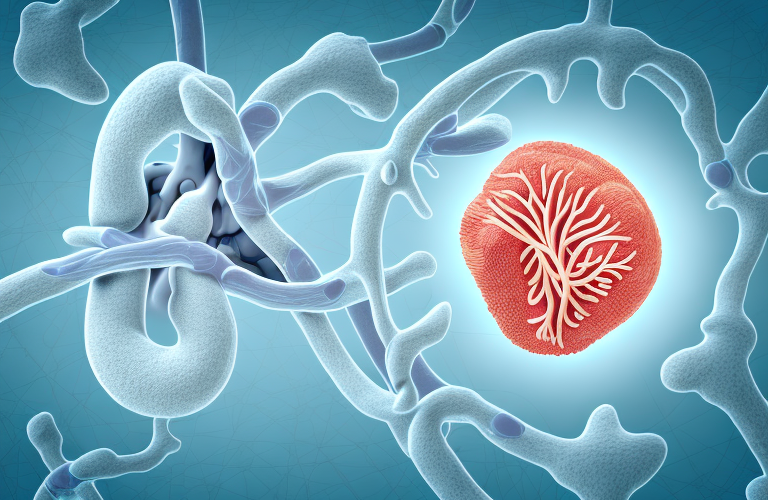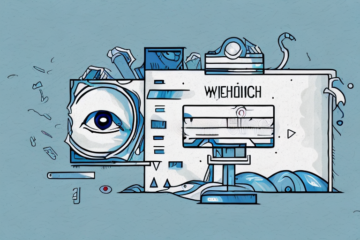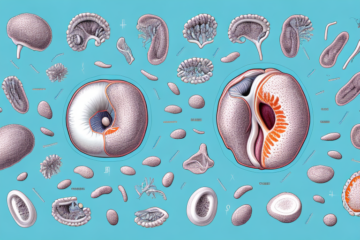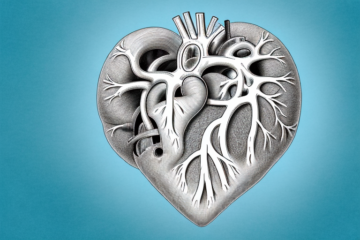Ureteral stenosis is a medical condition in which one or both of the ureters – the tubes that carry urine from the kidneys to the bladder – narrows or become obstructed, causing a range of uncomfortable and alarming symptoms. In this article, we will take a comprehensive look at the various aspects of this condition, including its causes, symptoms, diagnosis, treatment, and management options, as well as some lifestyle changes and tips to prevent it from happening. So, let’s get started!
Understanding Ureteral Stenosis: An Overview
Ureteral stenosis is a relatively common condition that affects people of all ages and genders. It is caused when the ureter narrows or become obstructed, preventing the smooth and free flow of urine from the kidneys to the bladder, causing swelling, inflammation, and discomfort. Depending on the severity of the obstruction, the symptoms can range from mild to severe and can cause significant disruption to a person’s daily life.
There are several factors that can contribute to the development of ureteral stenosis, including previous surgeries, kidney stones, infections, and congenital abnormalities. In some cases, the condition may be asymptomatic and only discovered during routine medical exams. Treatment options for ureteral stenosis vary depending on the severity of the obstruction and may include medication, minimally invasive procedures, or surgery. It is important to seek medical attention if you experience any symptoms of ureteral stenosis, as early diagnosis and treatment can help prevent complications and improve outcomes.
Common Symptoms of Ureteral Stenosis You Shouldn’t Ignore
Some of the most typical symptoms of ureteral stenosis include abdominal pain, flank pain, urinary tract infections, blood in the urine, painful urination, frequent urination, and fever. These symptoms can be mild or severe, and they can vary from person to person. It is important not to ignore these symptoms as untreated ureteral stenosis can lead to more severe health problems in the long run.
Another symptom of ureteral stenosis is swelling in the legs or feet. This occurs when the kidneys are unable to remove excess fluids from the body, leading to fluid buildup in the lower extremities. Additionally, some people may experience nausea and vomiting as a result of the condition.
If left untreated, ureteral stenosis can lead to kidney damage or even kidney failure. It is important to seek medical attention if you experience any of these symptoms, as early diagnosis and treatment can prevent further complications.
Causes of Ureteral Stenosis: A Comprehensive Guide
There are several causes of ureteral stenosis, including congenital narrowness of the ureter, kidney stones, injuries, infections, cancer, radiation therapy, or surgical complications. Some people are at a higher risk of developing ureteral stenosis than others, including those with a history of kidney stones, urinary tract infections, and those who have undergone abdominal surgery.
Another potential cause of ureteral stenosis is the use of certain medications, such as nonsteroidal anti-inflammatory drugs (NSAIDs) and antibiotics. These medications can cause inflammation and scarring in the ureter, leading to narrowing and blockage. Additionally, certain medical conditions, such as lupus and diabetes, can increase the risk of developing ureteral stenosis.
Symptoms of ureteral stenosis can vary depending on the severity of the condition, but may include pain or discomfort in the side or back, frequent urination, and blood in the urine. Treatment options for ureteral stenosis may include surgery, stent placement, or medication to manage symptoms. It is important to seek medical attention if you experience any symptoms or have a history of risk factors for ureteral stenosis.
How to Diagnose Ureteral Stenosis: Tests and Procedures
If you suspect that you have ureteral stenosis, your healthcare provider may recommend performing a series of tests and procedures to confirm the diagnosis and identify the underlying cause of the condition. These may include imaging tests like X-rays, ultrasounds, CT scans, and MRI scans, as well as urine tests to look for signs of infection or inflammation.
In addition to these tests, your healthcare provider may also recommend a cystoscopy, which involves inserting a thin tube with a camera into the urethra to examine the bladder and ureters. This procedure can help identify any blockages or abnormalities in the urinary tract that may be causing the ureteral stenosis. In some cases, a biopsy may also be taken during the cystoscopy to further investigate any suspicious areas.
Types of Ureteral Stenosis: Obstructive vs Non-Obstructive
There are two main types of ureteral stenosis: obstructive and non-obstructive. In obstructive ureteral stenosis, the flow of urine is blocked partially or entirely, leading to swelling and inflammation in the kidney and ureters. Non-obstructive ureteral stenosis, on the other hand, is caused by a narrowing of the ureter, reducing the space available for urine to pass through. Both types of ureteral stenosis can cause severe symptoms and require prompt medical attention.
Obstructive ureteral stenosis is often caused by kidney stones, tumors, or scar tissue from previous surgeries. Non-obstructive ureteral stenosis, on the other hand, can be caused by a variety of factors, including congenital abnormalities, infections, or inflammation. Treatment for both types of ureteral stenosis may involve medication, surgery, or a combination of both, depending on the severity of the condition and the underlying cause.
Risk Factors for Developing Ureteral Stenosis
Certain factors can increase a person’s risk of developing ureteral stenosis, including a history of kidney stones or urinary tract infections, a family history of the condition, previous abdominal surgery, and certain medical conditions like cancer or radiation therapy. If you have any of these risk factors, it’s essential to be aware of the signs and symptoms of ureteral stenosis and seek medical attention if any of them occur.
Another risk factor for developing ureteral stenosis is the prolonged use of certain medications, such as nonsteroidal anti-inflammatory drugs (NSAIDs) and antibiotics. These medications can cause damage to the urinary tract, leading to the development of ureteral stenosis. It’s important to talk to your doctor about the potential risks of any medications you are taking and to follow their instructions for use.
Effectively Managing Ureteral Stenosis: Treatment Options
Ureteral stenosis can be treated in several ways, depending on the underlying cause of the condition. If the stenosis is caused by an infection or inflammation, your healthcare provider may prescribe antibiotics or anti-inflammatory medications to alleviate the symptoms and reduce inflammation. If the cause is a kidney stone or other obstruction, your provider may recommend removing the obstruction surgically or using specialized techniques, such as lithotripsy or endoscopy, to break up and remove the obstruction carefully.
In addition to these treatment options, lifestyle changes can also help manage ureteral stenosis. Drinking plenty of water and avoiding foods that are high in oxalates, such as spinach and chocolate, can help prevent the formation of kidney stones, which can lead to ureteral stenosis. Additionally, maintaining a healthy weight and exercising regularly can help reduce the risk of developing conditions that can lead to ureteral stenosis, such as diabetes and high blood pressure.
If left untreated, ureteral stenosis can lead to serious complications, such as kidney damage and infection. It is essential to seek medical attention if you experience symptoms such as pain or discomfort in the lower back or abdomen, difficulty urinating, or blood in the urine. Early diagnosis and treatment can help prevent these complications and improve your overall health and well-being.
Surgery for Ureteral Stenosis: What to Expect
If surgery is required for ureteral stenosis, your healthcare provider will discuss the procedure and what to expect before, during, and after the surgery. Recovery time may vary depending on the procedure’s scope, but most people can resume their normal activities within a few days or weeks of surgery.
During the surgery, the surgeon will make an incision in your abdomen or back to access the affected ureter. The surgeon will then remove the damaged portion of the ureter and reattach the healthy ends. In some cases, a stent may be placed to keep the ureter open during the healing process.
After the surgery, you may experience some discomfort and pain, which can be managed with pain medication. It is important to follow your healthcare provider’s instructions for post-operative care, including keeping the incision site clean and dry, avoiding strenuous activities, and attending follow-up appointments to monitor your recovery.
Preventing Ureteral Stenosis: Lifestyle Changes and Tips
There are some lifestyle changes and preventative measures you can take to lower your risk of developing ureteral stenosis. These include staying hydrated by drinking plenty of water, avoiding caffeinated beverages and alcohol, maintaining a healthy weight, and exercising regularly. Additionally, following appropriate hygiene practices and seeking prompt medical attention for any symptoms or infections can help prevent ureteral stenosis from developing in the first place.
It is also important to avoid prolonged use of certain medications, such as nonsteroidal anti-inflammatory drugs (NSAIDs) and antibiotics, as they can increase the risk of developing ureteral stenosis. If you have a history of kidney stones or urinary tract infections, it is important to work with your healthcare provider to develop a plan to prevent future occurrences, as these conditions can increase your risk of developing ureteral stenosis. By making these lifestyle changes and working with your healthcare provider, you can take steps to prevent ureteral stenosis and maintain good urinary tract health.
Coping with Ureteral Stenosis: Emotional and Mental Health Support
Ureteral stenosis can be a challenging condition to manage, and it’s essential to address the emotional and mental health aspects of living with the condition. Seeking support from friends, family, or mental health professionals can help you cope with the side effects of the condition and manage any emotional distress it may cause.
In conclusion, ureteral stenosis is a common and often painful condition that can affect people of all ages and genders. By being aware of the symptoms, causes, and treatment options for this condition, you can work closely with your healthcare provider to manage the condition and improve your quality of life. Remember to take preventative measures and seek medical attention if you suspect you may have ureteral stenosis.
It’s important to note that coping with ureteral stenosis can also involve making lifestyle changes. This may include modifying your diet, engaging in regular exercise, and avoiding certain activities that may exacerbate your symptoms. Additionally, joining a support group or online community can provide a sense of belonging and understanding, as well as a platform to share experiences and advice with others who are going through similar challenges.










